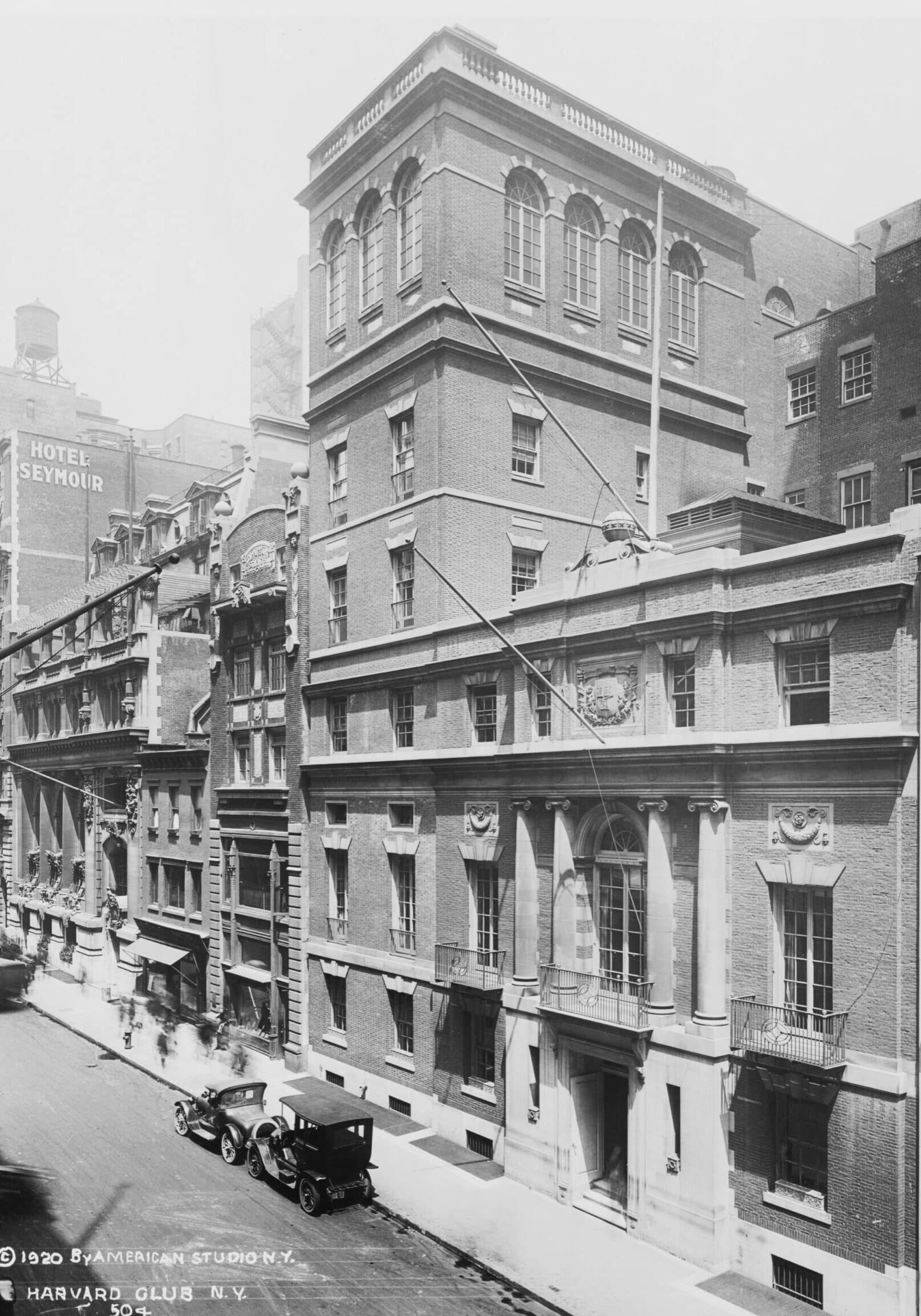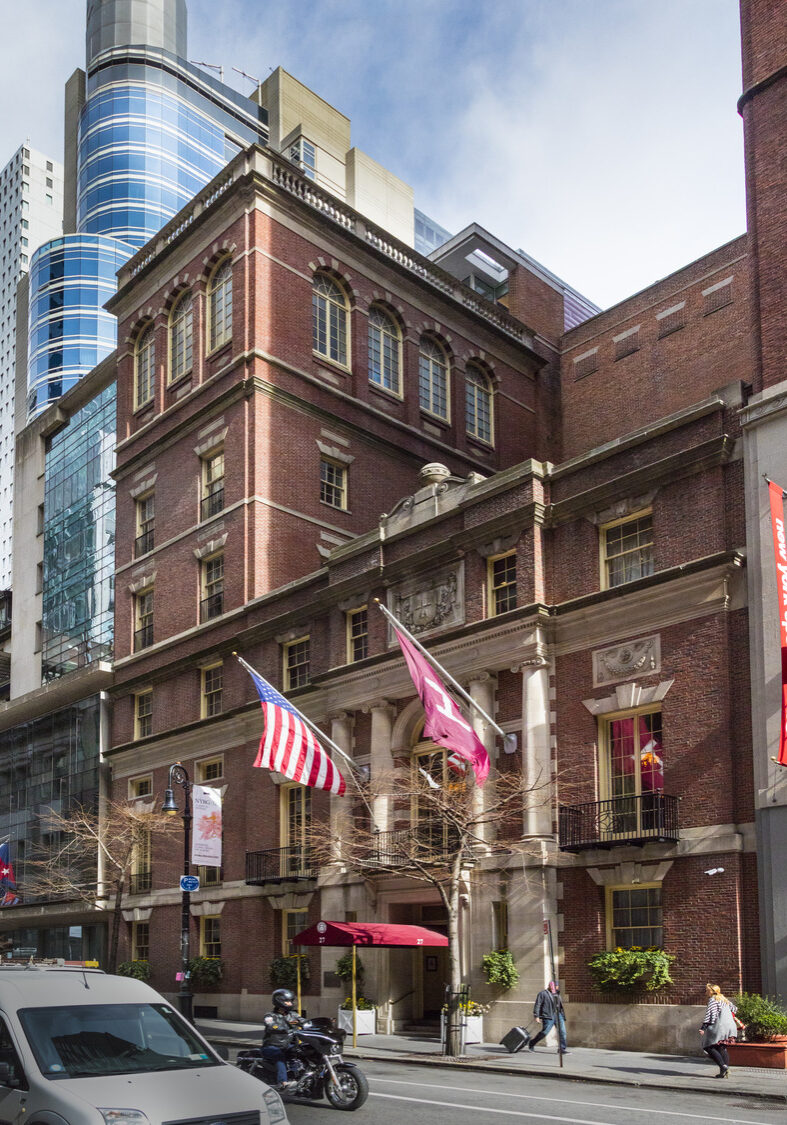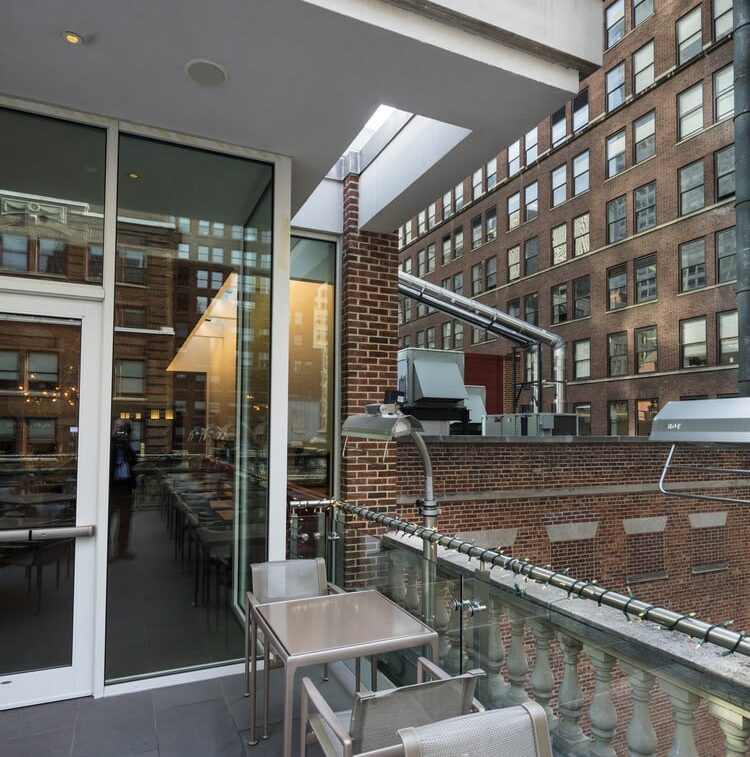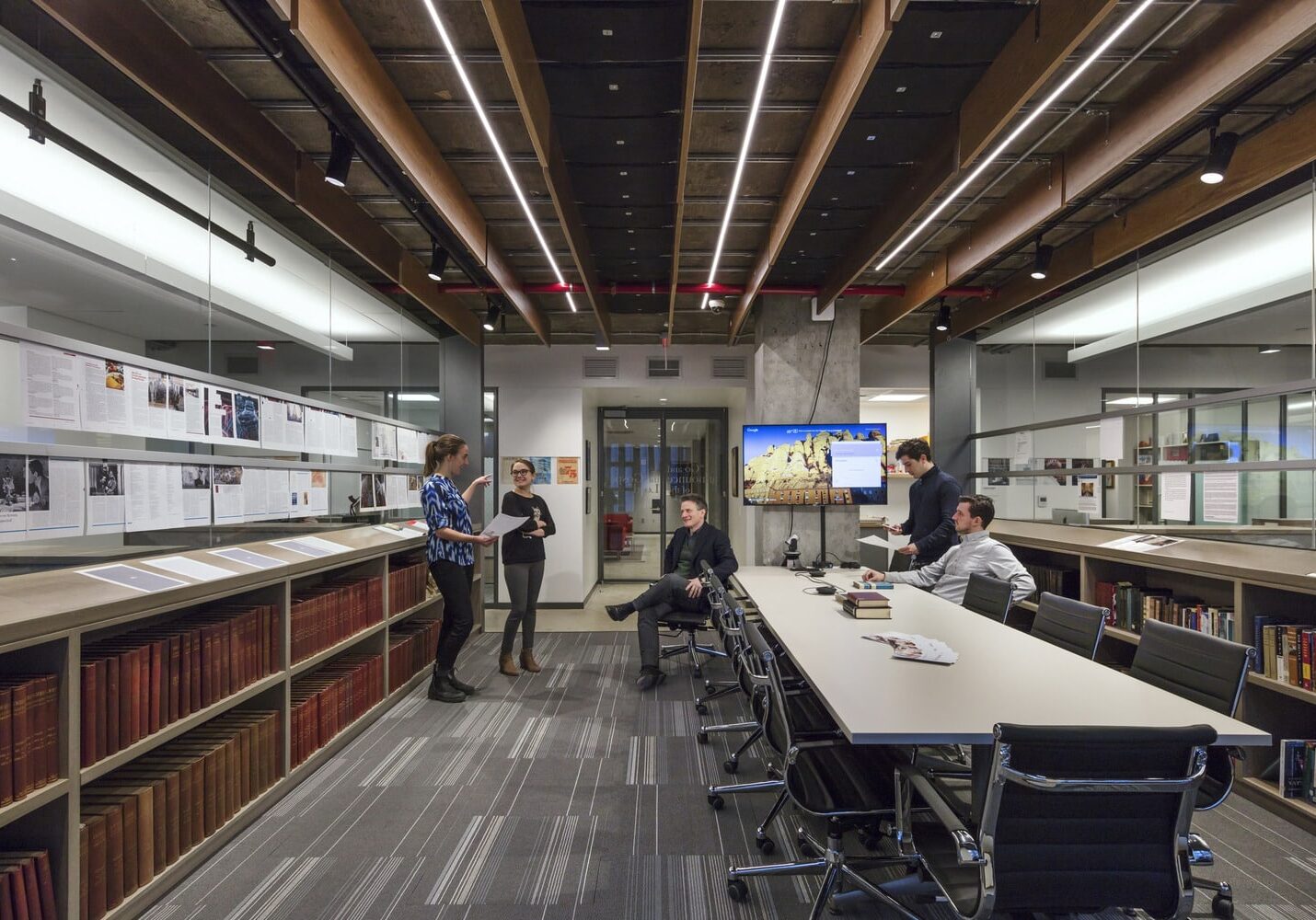Harvard Club Expansion
Writing the next chapter for a historic NYC landmark.
The project is a 2000SF addition to an 8 story, 1915 landmark McKim, Mead & White building, including a rooftop bar, outdoor terrace, men’s locker room, business center, 8 guest rooms and kitchenette. A key finding from the project’s assessment phase was discrepancies between drawings of the Club and actual built conditions - a result of multiple renovations to the building throughout its history. Initial studies required extensive research into several older designs, as well as creative strategies for their integration. After a series of test fits, the Harvard Club decided that building up and around the existing building (using the site’s existing allowable FAR) was the optimal expansion strategy.
Code compliance issues for the renovation and addition required extensive analysis, as the Club is one of the very first buildings to be named a New York City landmark.
Writing the next chapter for a historic NYC landmark.
The project is a 2000SF addition to an 8 story, 1915 landmark McKim, Mead & White building, including a rooftop bar, outdoor terrace, men’s locker room, business center, 8 guest rooms and kitchenette. A key finding from the project’s assessment phase was discrepancies between drawings of the Club and actual built conditions - a result of multiple renovations to the building throughout its history. Initial studies required extensive research into several older designs, as well as creative strategies for their integration. After a series of test fits, the Harvard Club decided that building up and around the existing building (using the site’s existing allowable FAR) was the optimal expansion strategy.

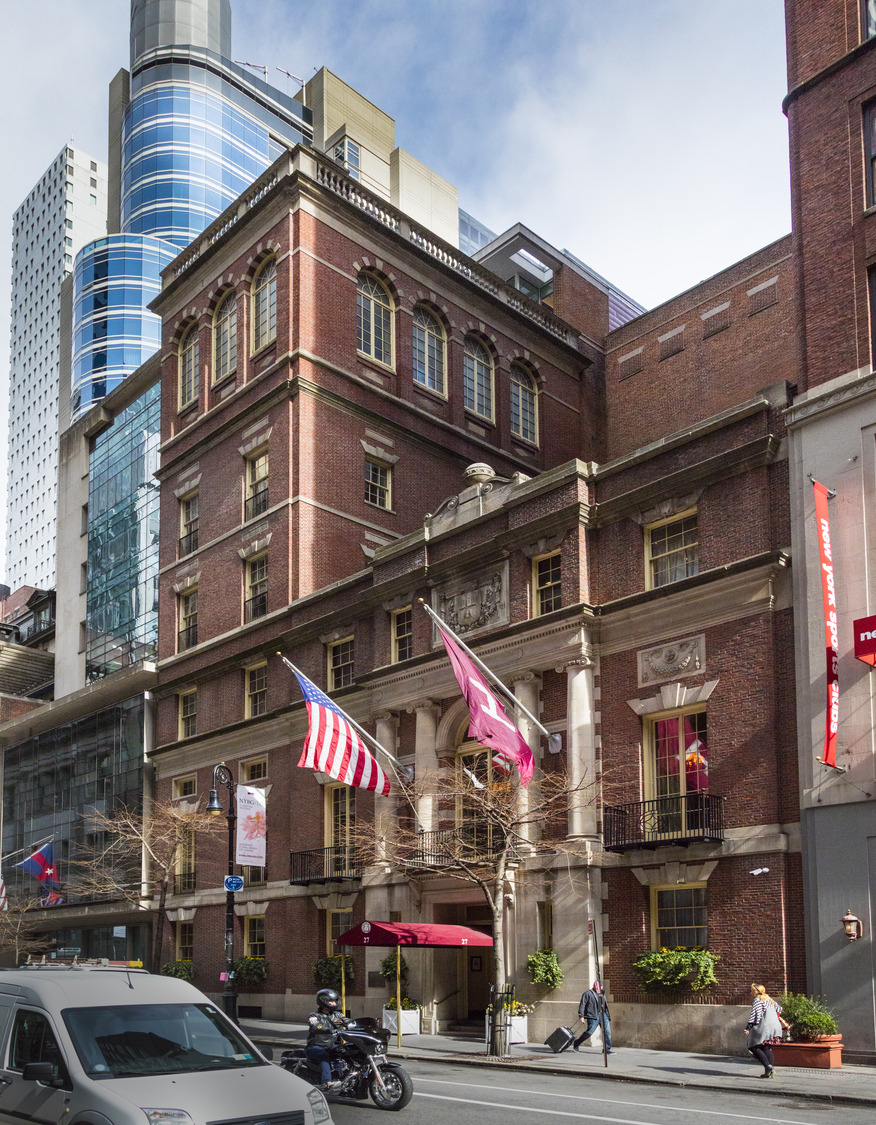
Code compliance issues for the renovation and addition required extensive analysis, as the Club is one of the very first buildings to be named a New York City landmark.
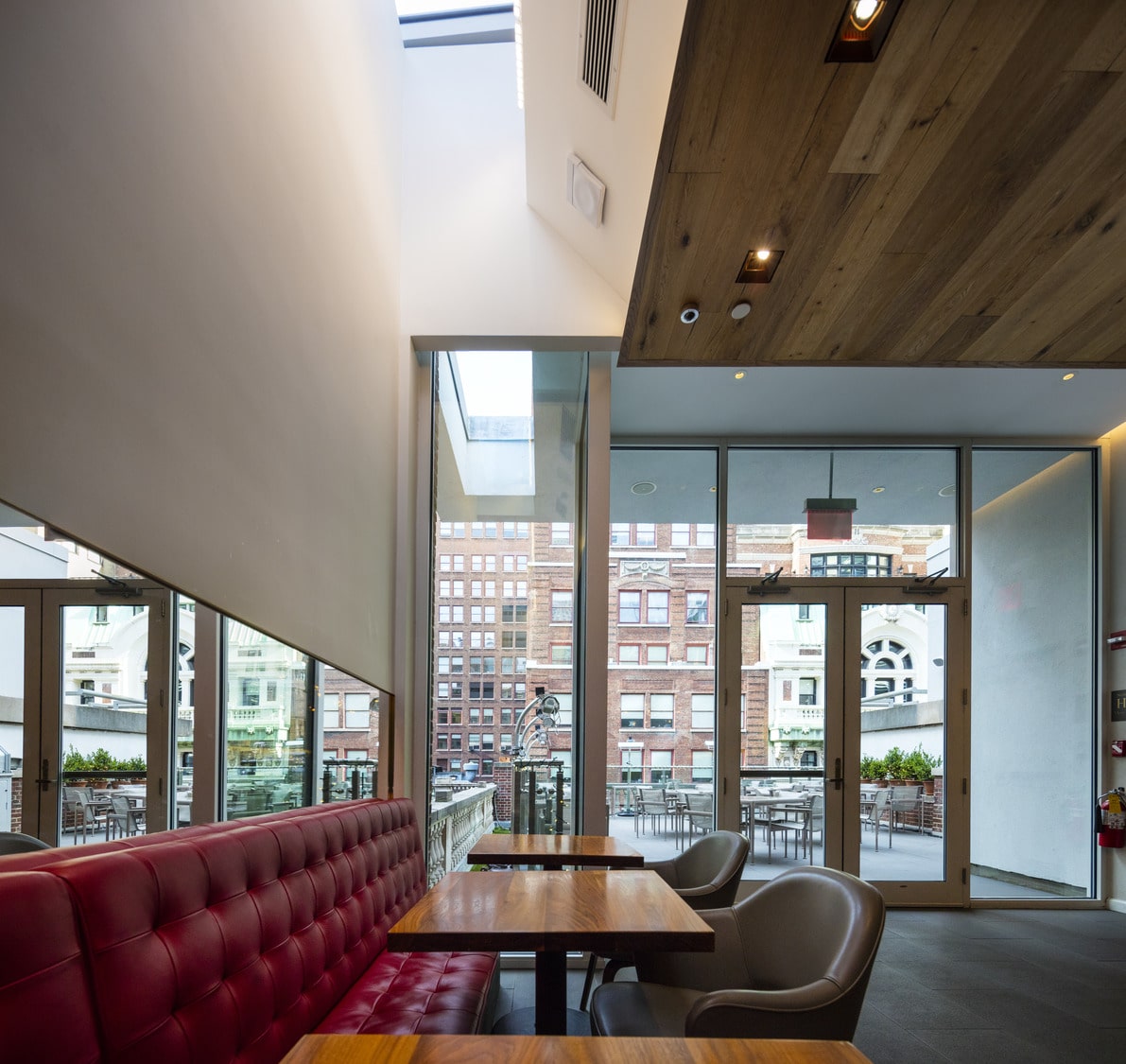
Working with our consultant team, Marvel was able to develop innovative solutions that integrated newer systems into the Club without triggering an overhaul of the existing fabric.
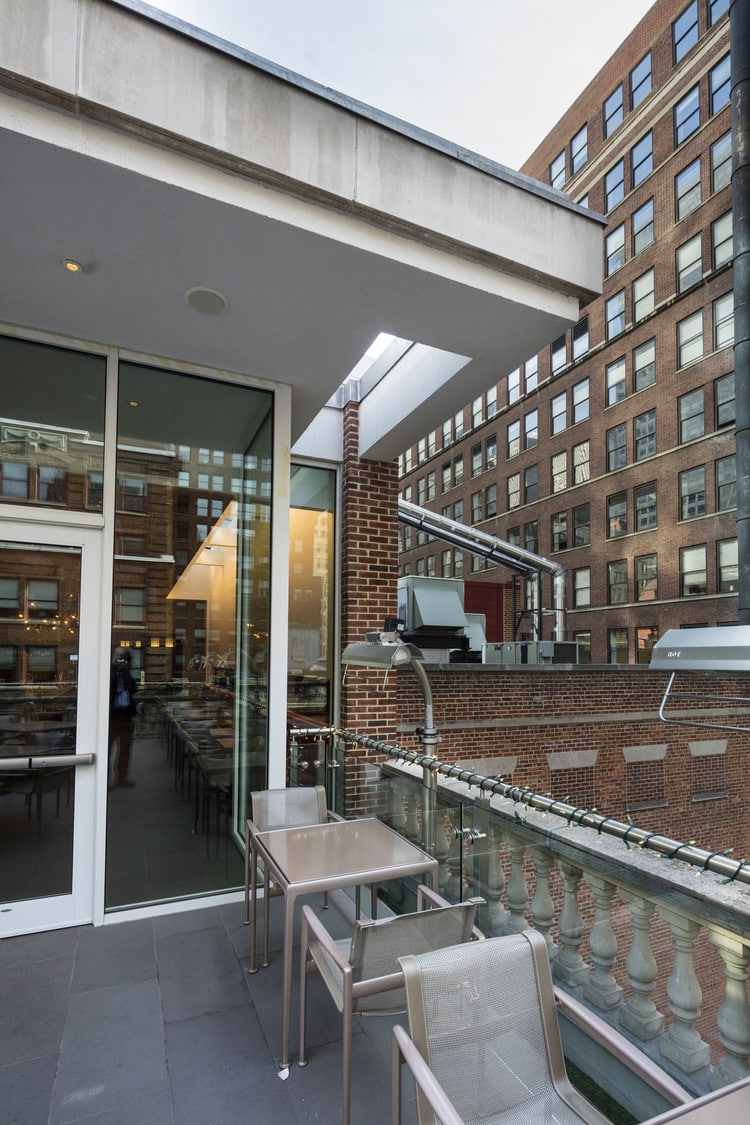
Because of the different types of programs being pursued and the need to keep the facility fully operational during construction, a phasing approach that separated the work into distinct projects proved the best way to proceed.
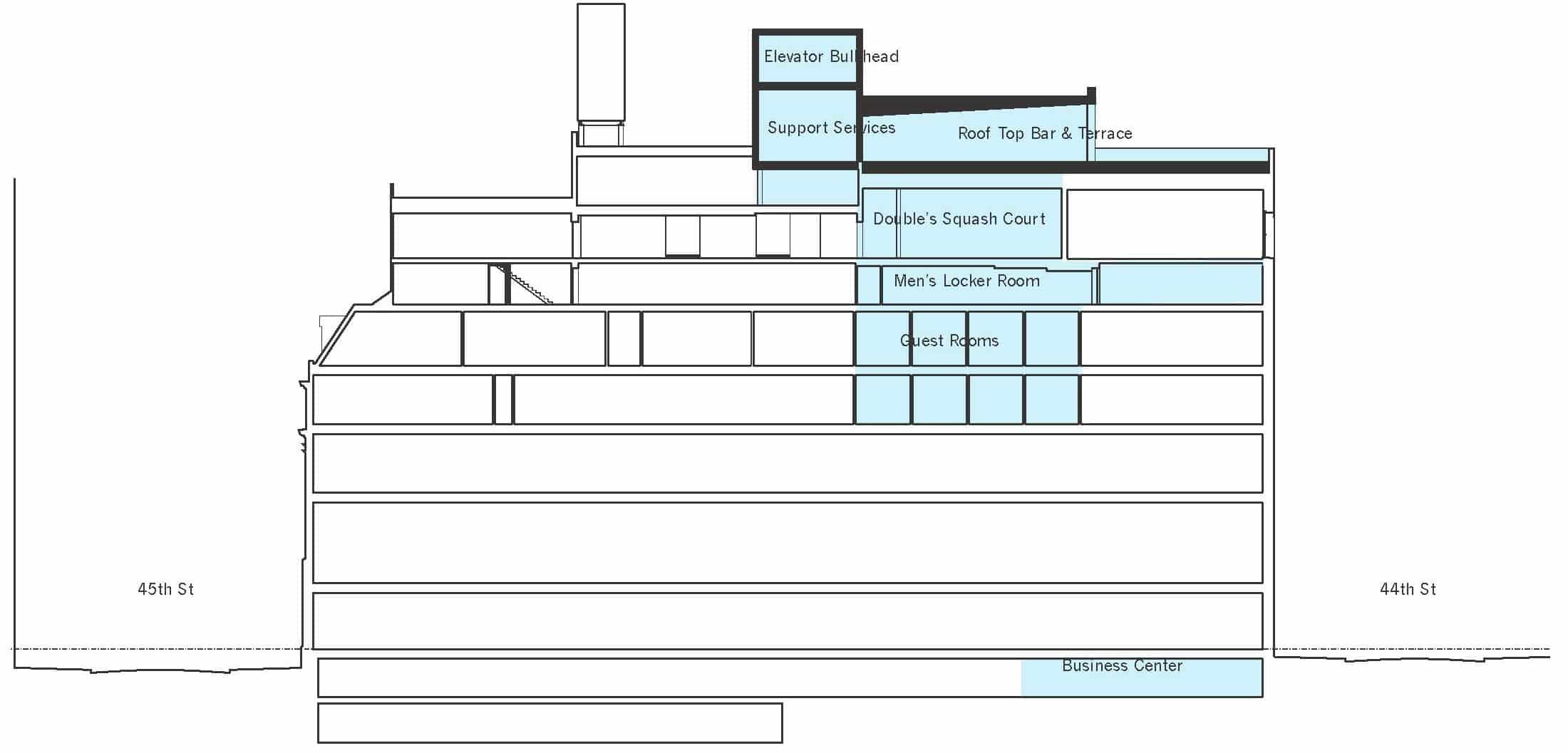
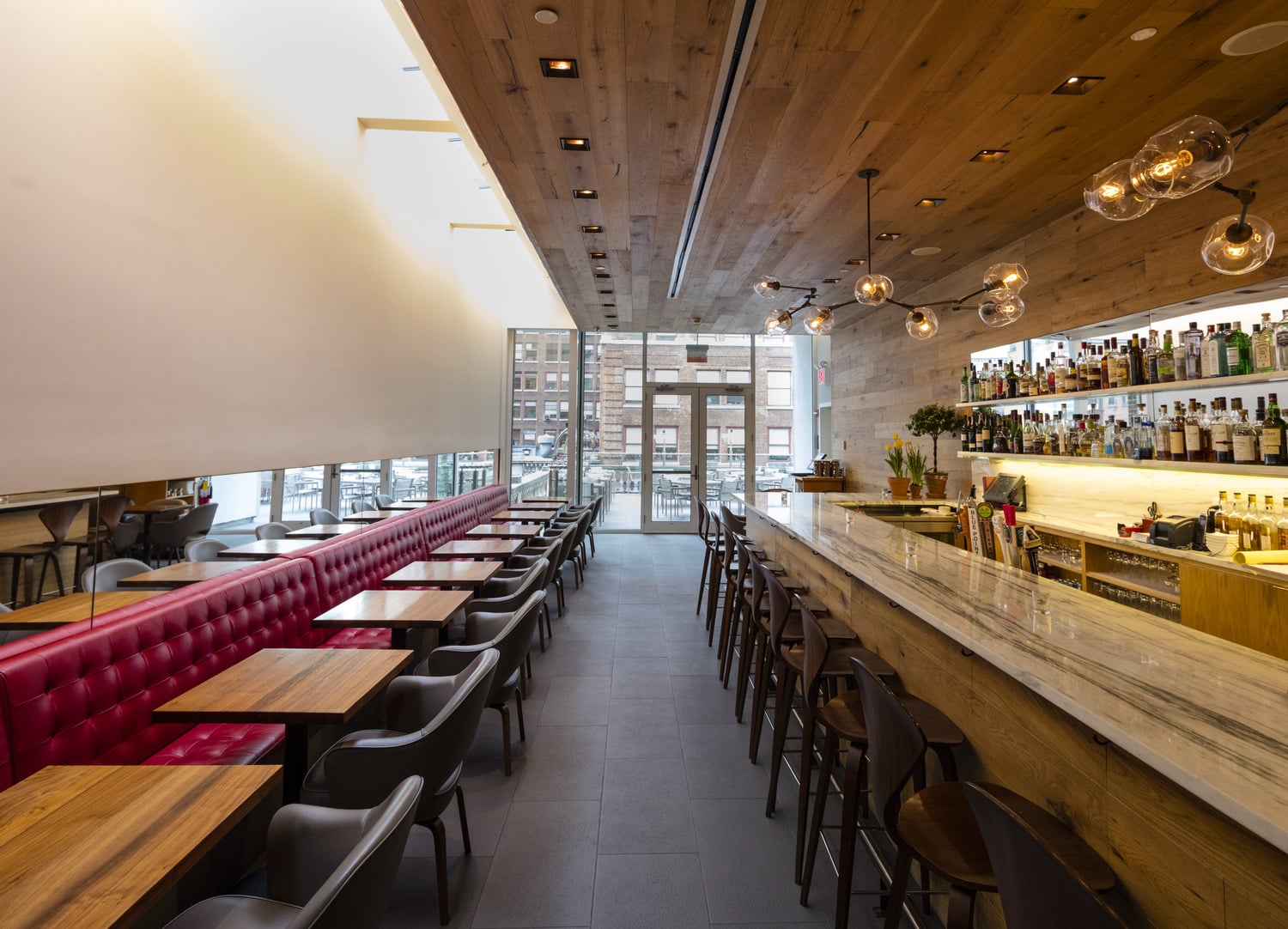
The aesthetic intention was to create a sleek, modern contrast to the club’s more traditional marble-and-oak feel.
Harvard Club Expansion
Writing the next chapter for a historic NYC landmark.
The project is a 2000SF addition to an 8 story, 1915 landmark McKim, Mead & White building, including a rooftop bar, outdoor terrace, men’s locker room, business center, 8 guest rooms and kitchenette. A key finding from the project’s assessment phase was discrepancies between drawings of the Club and actual built conditions - a result of multiple renovations to the building throughout its history. Initial studies required extensive research into several older designs, as well as creative strategies for their integration. After a series of test fits, the Harvard Club decided that building up and around the existing building (using the site’s existing allowable FAR) was the optimal expansion strategy.
Code compliance issues for the renovation and addition required extensive analysis, as the Club is one of the very first buildings to be named a New York City landmark.
Writing the next chapter for a historic NYC landmark.
The project is a 2000SF addition to an 8 story, 1915 landmark McKim, Mead & White building, including a rooftop bar, outdoor terrace, men’s locker room, business center, 8 guest rooms and kitchenette. A key finding from the project’s assessment phase was discrepancies between drawings of the Club and actual built conditions - a result of multiple renovations to the building throughout its history. Initial studies required extensive research into several older designs, as well as creative strategies for their integration. After a series of test fits, the Harvard Club decided that building up and around the existing building (using the site’s existing allowable FAR) was the optimal expansion strategy.


Code compliance issues for the renovation and addition required extensive analysis, as the Club is one of the very first buildings to be named a New York City landmark.

Working with our consultant team, Marvel was able to develop innovative solutions that integrated newer systems into the Club without triggering an overhaul of the existing fabric.

Because of the different types of programs being pursued and the need to keep the facility fully operational during construction, a phasing approach that separated the work into distinct projects proved the best way to proceed.


The aesthetic intention was to create a sleek, modern contrast to the club’s more traditional marble-and-oak feel.
Harvard Club Expansion
Writing the next chapter for a historic NYC landmark.
The project is a 2000SF addition to an 8 story, 1915 landmark McKim, Mead & White building, including a rooftop bar, outdoor terrace, men’s locker room, business center, 8 guest rooms and kitchenette. A key finding from the project’s assessment phase was discrepancies between drawings of the Club and actual built conditions - a result of multiple renovations to the building throughout its history. Initial studies required extensive research into several older designs, as well as creative strategies for their integration. After a series of test fits, the Harvard Club decided that building up and around the existing building (using the site’s existing allowable FAR) was the optimal expansion strategy.
Code compliance issues for the renovation and addition required extensive analysis, as the Club is one of the very first buildings to be named a New York City landmark.
Writing the next chapter for a historic NYC landmark.
The project is a 2000SF addition to an 8 story, 1915 landmark McKim, Mead & White building, including a rooftop bar, outdoor terrace, men’s locker room, business center, 8 guest rooms and kitchenette. A key finding from the project’s assessment phase was discrepancies between drawings of the Club and actual built conditions - a result of multiple renovations to the building throughout its history. Initial studies required extensive research into several older designs, as well as creative strategies for their integration. After a series of test fits, the Harvard Club decided that building up and around the existing building (using the site’s existing allowable FAR) was the optimal expansion strategy.


Code compliance issues for the renovation and addition required extensive analysis, as the Club is one of the very first buildings to be named a New York City landmark.

Working with our consultant team, Marvel was able to develop innovative solutions that integrated newer systems into the Club without triggering an overhaul of the existing fabric.

Because of the different types of programs being pursued and the need to keep the facility fully operational during construction, a phasing approach that separated the work into distinct projects proved the best way to proceed.



